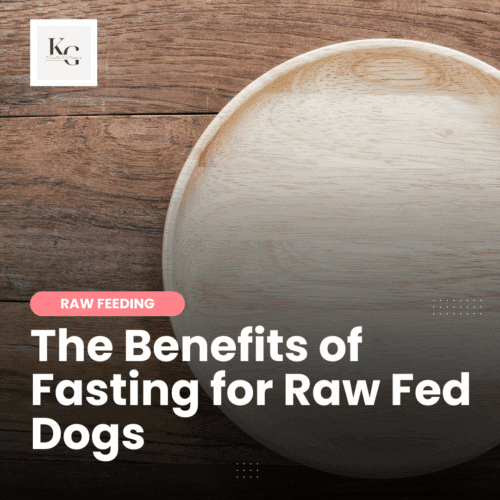Keep the Tail Wagging is supported by pet parents. I occasionally earn a commission (at no additional cost to you) when you click through an affiliate link to one of my favorite products. Thank you for your support. Read More
As someone who has been feeding a raw diet to her dogs for over a decade, I can tell you: once you make the switch, you’ll never look back. Raw feeding isn’t just about giving your dog “fancy food”—it’s about honoring your dog’s natural biology and watching them thrive on real, fresh ingredients.
If you're curious about starting raw feeding, this guide is for you. Let’s walk through the basics, benefits, and practical steps to get you and your dog on the right path.
What is Raw Feeding?
Raw feeding for dogs is the practice of feeding a diet made up of raw, unprocessed ingredients such as muscle meat, organ meat, raw meaty bones, and sometimes fruits and vegetables. The goal is to mimic the natural diet of wild canines, providing biologically appropriate nutrition that supports overall health and vitality.
Why Raw Feeding?
Dogs are facultative carnivores, which means they are designed to eat meat, bones, and organs, with some capacity to digest plant matter. A balanced raw diet mimics what dogs would naturally eat in the wild.
The benefits I’ve personally seen (and many others report) include:
- Shiny, healthy coats
- Cleaner teeth and fresher breath
- Smaller, less smelly stools
- Increased energy and vitality
- Better muscle tone and body condition
- Fewer allergies and digestive issues
- Fewer veterinarian visits
Seeing your dog glow with health is truly rewarding thanks to real, unprocessed food.
Common Proteins, Organs, and Bones
One of the joys of raw feeding is variety. Here’s a list of the staples most raw feeders include in their dogs’ diets:
| Common Proteins | Common Organ Meats | Common Raw Bones |
| Beef | Liver | Duck necks, wings, feet, and frames |
| Turkey | Kidney | Chicken feet, quarters, carcass |
| Duck | Spleen | Turkey necks |
| Pork | Heart (muscular organ, nutrient-rich) | Pork ribs |
| Fish (sardines, mackerel) | Brain (pork) | Lamb ribs, necks |
| Venison | Pancreas (pork or beef) | Rabbit carcass |
| Lamb | ||
| Chicken (I rarely feed) |
When fed safely and appropriately, these ingredients provide essential nutrients and dental benefits. However, due to sourcing, I don't often feed pancreas and pork brains. I feed chicken feet regularly, but choose not to feed chicken as a primary protein because it's a common sensitivity.
The Importance of a Balanced Diet
A balanced raw diet means providing the correct ratio of:
- Muscle meat
- Organ meat (about 10% of the diet, with half of that being liver)
- Edible bone (10–15%)
- Optional: fruits, vegetables, seeds, or supplements
Feeding only muscle meat or only bones is a recipe for nutritional imbalances. Learning the correct ratios and rotating different proteins and organ types are key to long-term success.
Common Raw Feeding Models
There are a few established feeding models to help guide you:
1 – Prey Model Raw (PMR):
- Mimics whole-prey animals (80% muscle meat, 10% bone, 10% organs)
- Minimal to no plant matter
2 – BARF (Biologically Appropriate Raw Food):
- Includes meat, bones, organs, and ~10% fruits/veggies
- Some feeders also add seeds, nuts, and dairy
3 – FrankenPrey:
- A “piecemeal” version of the prey model, assembling whole-prey ratios from various animals (e.g., beef muscle + chicken bone + pork organ)
4 – Ancestral Model:
Inspired by what wild canines would eat over time, this model emphasizes whole prey, scavenged foods, and seasonal variety. It often includes muscle meat, bones, organs, fur, feathers, glands, and even soil or plant matter that would naturally be consumed with prey. This model is focused on long-term balance rather than daily ratios.
I’ve found that no single method is “perfect” for every dog. Many feeders adapt or blend models to fit their dogs’ unique needs.
Where to Buy Raw Ingredients
Sourcing can feel overwhelming at first, but there are great options out there:
- Local butchers and meat processors
- Ethnic grocery stores (often have great deals on organ meats)
- Restaurant supply stores
- Outlet grocery stores
- Farmers' markets and homesteaders
- Raw feeding co-ops or buying groups
- Online raw dog food suppliers (pre-made raw or bulk ingredients)
- Hunting or fishing (if legal in your area)
Don’t hesitate to ask your butcher for trimmings, bones, organs, or odd cuts—they’re often inexpensive and nutrient-rich.
Tools Every Raw Feeder Needs
Here are some essentials that make raw feeding safe and convenient:
- Digital kitchen scale (for accurate weighing)
- Sharp knives and/or kitchen shears
- Cutting boards (dedicated for raw meat)
- Freezer space (trust me, you’ll need it)
- Food-safe storage containers or freezer bags
- Gloves (optional but handy)
- A dedicated cleaning routine (sanitizing tools and prep space)
Optional but helpful:
- Meat grinder (if you prefer ground raw)
- Bone cutters (for larger bones)
- Dedicated freezer (great for ordering in bulk)
How Much Food to Feed
The general rule of thumb:
- Adult dogs: 2–3% of ideal body weight per day
- Puppies: 5–10% of current body weight per day (adjust as they grow)
Example: A 50-lb adult dog typically eats about 1–1.5 lbs of raw food daily.
Always monitor weight, energy levels, and body condition to fine-tune portions. I recommend using the Feed Real calculators for amounts specific to your dog.
The Joy of Raw Feeding
Raw feeding is more than just a diet—it’s a lifestyle and commitment. You’ll become deeply familiar with canine nutrition, develop sourcing skills, and forge a stronger bond with your dog by providing the most natural, nourishing food possible.
It can seem daunting at first, but raw feeding becomes second nature with education, preparation, and support. And when you see your dog glowing with health, you’ll know every ounce of effort was worth it.





